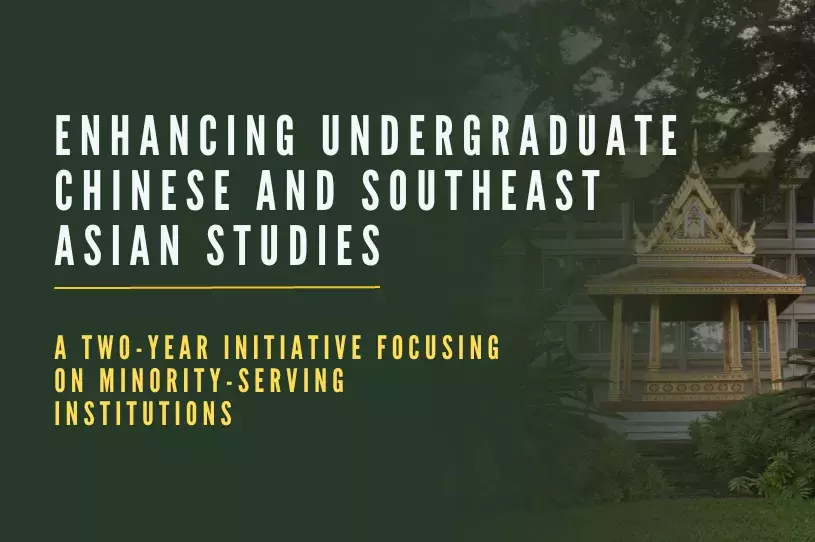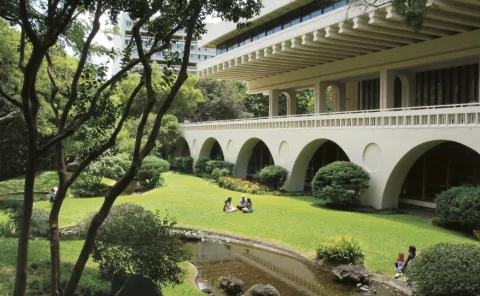Error message

Project Rationale
Enhancing Undergraduate Chinese and Southeast Asian Studies is a project, funded by the Henry Luce Foundation, that helps close the Asian studies “divide” and promotes “inclusive campus” commitments in American higher education.
Addressing the Asian Studies Divide
Histories matter, including in higher education. American colleges and universities have been working to globalize the undergraduate curriculum for more than a generation, and much progress has been made in this direction. Strong Asian studies programs can now be found at most leading universities and liberal arts colleges. The Asian Studies Development Program (ASDP) was founded in 1991 to address the Asian studies divide then developing between top tier institutions and the colleges and universities at which the vast majority of Americans receive their undergraduate educations.
Through its summer institutes, field seminars, workshops, and conferences, ASDP has helped more than 1,500 faculty members representing the full spectrum of American higher education to infuse significant Asian content into their undergraduate humanities and social science courses. Yet, the Asian studies divide persists. Asia-focused courses and languages remain limited at most of the 4,500 institutions of higher education in the US, especially those that serve Black, Latinx, Native American, and Pacific Islander communities, but also those with significant numbers of Asian-American students.
The goal of this project is to foster the development of undergraduate Chinese and Southeast Asian studies programs, with a focus on minority-serving institutions (MSIs). Asia is now home to one-half of the world’s people and is the engine of two-thirds of global economic growth. It is a matter of educational equity that students at MSIs have opportunities to learn-about, learn-from, and learn-with their Asian counterparts.
The Inclusive Campus

It is now standard practice for American colleges and universities to espouse values commitments to diversity, equity and inclusion. Yet, minority students whose heritage cultures and histories are not well-represented in course curricula—or which are taught only in small elective classes—are being informed, in effect, that their cultures and histories do not matter.
As a project, Enhancing Chinese and Southeast Asian Studies is focused on deepening understanding of and appreciation of Chinese and Southeast Asian cultures, histories and peoples. It is premised, however, on the value of diversity as relational quality that emerges when differences are engaged as opportunities for mutual contribution to shared flourishing. Its broader aim is thus to cultivate intersectional understanding, both on and off campus, and to foster productive interactions among faculty in African American, Latinx, Pacific Islander, Native American and Asian American studies.
Project Rationale
Enhancing Undergraduate Chinese and Southeast Asian Studies is a project, funded by the Henry Luce Foundation, that helps close the Asian studies “divide” and promotes “inclusive campus” commitments in American higher education.
Addressing the Asian Studies Divide
Histories matter, including in higher education. American colleges and universities have been working to globalize the undergraduate curriculum for more than a generation, and much progress has been made in this direction. Strong Asian studies programs can now be found at most leading universities and liberal arts colleges. The Asian Studies Development Program (ASDP) was founded in 1991 to address the Asian studies divide then developing between top tier institutions and the colleges and universities at which the vast majority of Americans receive their undergraduate educations.
Through its summer institutes, field seminars, workshops, and conferences, ASDP has helped more than 1,500 faculty members representing the full spectrum of American higher education to infuse significant Asian content into their undergraduate humanities and social science courses. Yet, the Asian studies divide persists. Asia-focused courses and languages remain limited at most of the 4,500 institutions of higher education in the US, especially those that serve Black, Latinx, Native American, and Pacific Islander communities, but also those with significant numbers of Asian-American students.
The goal of this project is to foster the development of undergraduate Chinese and Southeast Asian studies programs, with a focus on minority-serving institutions (MSIs). Asia is now home to one-half of the world’s people and is the engine of two-thirds of global economic growth. It is a matter of educational equity that students at MSIs have opportunities to learn-about, learn-from, and learn-with their Asian counterparts.
The Inclusive Campus

It is now standard practice for American colleges and universities to espouse values commitments to diversity, equity and inclusion. Yet, minority students whose heritage cultures and histories are not well-represented in course curricula—or which are taught only in small elective classes—are being informed, in effect, that their cultures and histories do not matter.
As a project, Enhancing Chinese and Southeast Asian Studies is focused on deepening understanding of and appreciation of Chinese and Southeast Asian cultures, histories and peoples. It is premised, however, on the value of diversity as relational quality that emerges when differences are engaged as opportunities for mutual contribution to shared flourishing. Its broader aim is thus to cultivate intersectional understanding, both on and off campus, and to foster productive interactions among faculty in African American, Latinx, Pacific Islander, Native American and Asian American studies.

